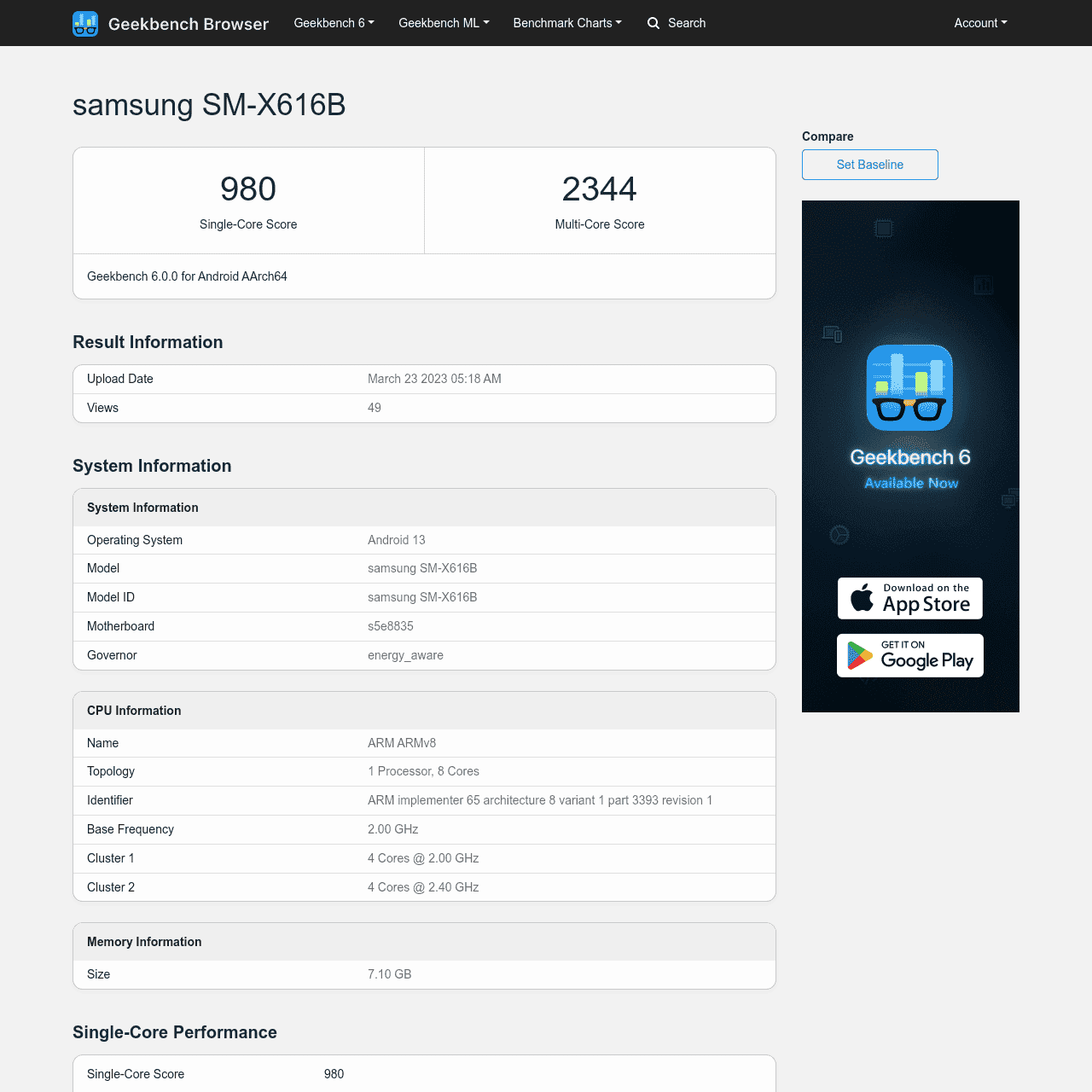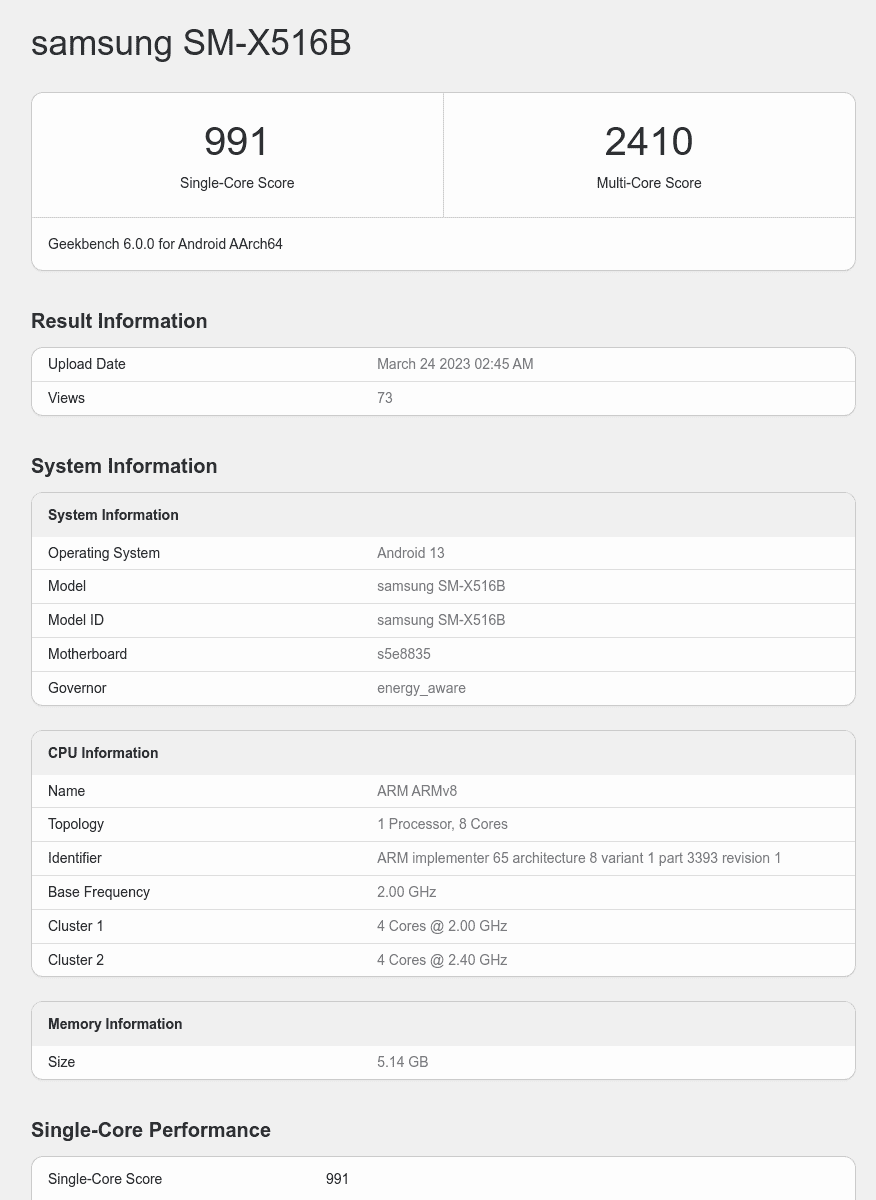Samsung’s Galaxy Tab S9 and Tab S9 Ultra, revealing their model designations as SM-X716B and SM-X916Ba, appeared on Geekbench. In addition, the platform has unveiled two more Samsung devices, believed to be the Galaxy Tab S9 FE/Lite models. These two devices, SM-X516B and SM-X616B, are powered by the Exynos 1380 SoC and run on Android 13.
The SM-X516B has 6GB of RAM, while the SM-X616B has 8 GB. Interestingly, the SM-X516B scored higher than the SM-X616B, although it’s important to note that these are likely pre-production units. Therefore, waiting for the retail versions to determine their true performance is best.
It’s not clear whether these devices are the Galaxy Tab S9 FE or Lite since last year’s Galaxy Tab S8 series didn’t include either model. However, the Tab S7 lineup had an FE model, while the Tab S6 had a Lite variant. As such, it remains to be seen which of these two devices will bear the FE or Lite moniker.
Following are the specs that these new Tabs from Samsung will likely feature:
| Model | Processor | RAM | Storage | Operating System |
|---|---|---|---|---|
| Tab S9 | Exynos 2200 | 8GB | 128GB/256GB | Android 13 |
| Tab S9 Ultra | Exynos 2200 | 12GB | 256GB/512GB | Android 13 |
| Tab S9 FE/Lite | Exynos 1380 | 6GB/8GB | 128GB/256GB | Android 13 |
| Tab S9+ (Rumored) | Snapdragon 8 Gen 2 for Galaxy | 12GB | 256GB/512GB | Android 13 |
While the Galaxy Tab S9 series already includes a Plus version, the SM-X716B, we have yet to see it on Geekbench. However, like its vanilla and Ultra counterparts, the Galaxy Tab S9+ will likely be powered by the Snapdragon 8 Gen 2 for Galaxy. This chip also powers the flagship Galaxy S23 series.







